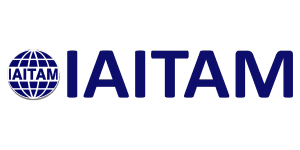First 12 months building a SAM program from scratch
A company with 5,000 employees hired you to establish its Software Asset Management program. Where do you start and how do you make an impact?

Start with this checklist:
– [ ] Understand your organization
– [ ] Learn about current procurement processes – Run a SAM Maturity Assessment
– [ ] Understand your organization’s mission and determine how SAM can support that goal
– [ ] Build an inventory of all hardware assets
– [ ] Discover software installed/purchased
– [ ] Determine software publishers with the highest risk of an audit
– [ ] Quantify the financial risk of software audits
– [ ] Build a business case for a SAM program so you can get additional resources (staff, tools)
– [ ] Set SMART goals for the SAM program for the first 12 months
Understand your organization:
An organization is like a living being.
Building a successful Software Asset Management (SAM) program takes time, effort, and a well-defined strategy. As the first hire tasked with establishing a SAM program for a company with 5,000 employees, you have a lot of work ahead of you. However, with the right approach, you can build a program that meets your organization’s needs and positions you as a strategic asset.
Before you can begin building your program, it’s essential to understand your organization. Every organization is unique, with different structures, cultures, and goals. Understanding how your organization operates will help you build a program that aligns with its needs and goals.
One of the first steps in establishing a SAM program is to learn about your organization’s current procurement processes. You need to know how software is currently being purchased, who is responsible for purchasing it, and what the approval process looks like. This information will help you identify any gaps or inefficiencies in the current procurement process and make recommendations for improvement that will benefit your SAM program. One of the ways to learn about your company is by conducting a SAM Maturity Assessment. A Maturity Assessment exercise provides a deep, comprehensive and insightful report in to the current state of SAM at the organization and provide you recommendations on what to focus on in the short, medium and long-term.
It’s also essential to understand your organization’s mission and goals. By positioning your SAM program as a strategic enabler, you can gain support and buy-in from key stakeholders, ensuring that your program is aligned with the overall business strategy. Building an inventory of all hardware assets and discovering software installed/purchased are critical components of a SAM program. These tasks will help you gain visibility into your organization’s IT environment, which will allow you to identify any software licensing compliance issues and take corrective action.
Quantifying the financial risk of software audits and determining software publishers with the highest risk of an audit will help you prioritize your efforts and allocate resources where they are needed most. It’s important to note that compliance risks can be costly and time-consuming to address, so it’s crucial to prioritize your efforts and focus on the areas that pose the highest risks.
Another critical component of building a successful SAM program is to build a business case for it. By demonstrating the benefits of a SAM program, you can secure additional resources, including staff and tools, to support your efforts. It’s essential to use data to support your business case, including the financial impact of non-compliance, the cost savings associated with a SAM program, and the potential for improved productivity and efficiency.
Finally, it’s important to set SMART goals for your SAM program. SMART stands for specific, measurable, achievable, relevant, and time-bound. By setting clear goals for your program, you can measure progress, identify areas for improvement, and make data-driven decisions about the direction of your program.
In conclusion, building a successful SAM program takes time, effort, and a well-defined strategy. By understanding your organization, learning about the current procurement processes, building an inventory of all hardware assets, discovering software installed/purchased, quantifying the financial risk of software audits, building a business case, and setting SMART goals, you can establish a program that not only meets your organization’s needs but also positions you as a strategic asset.
